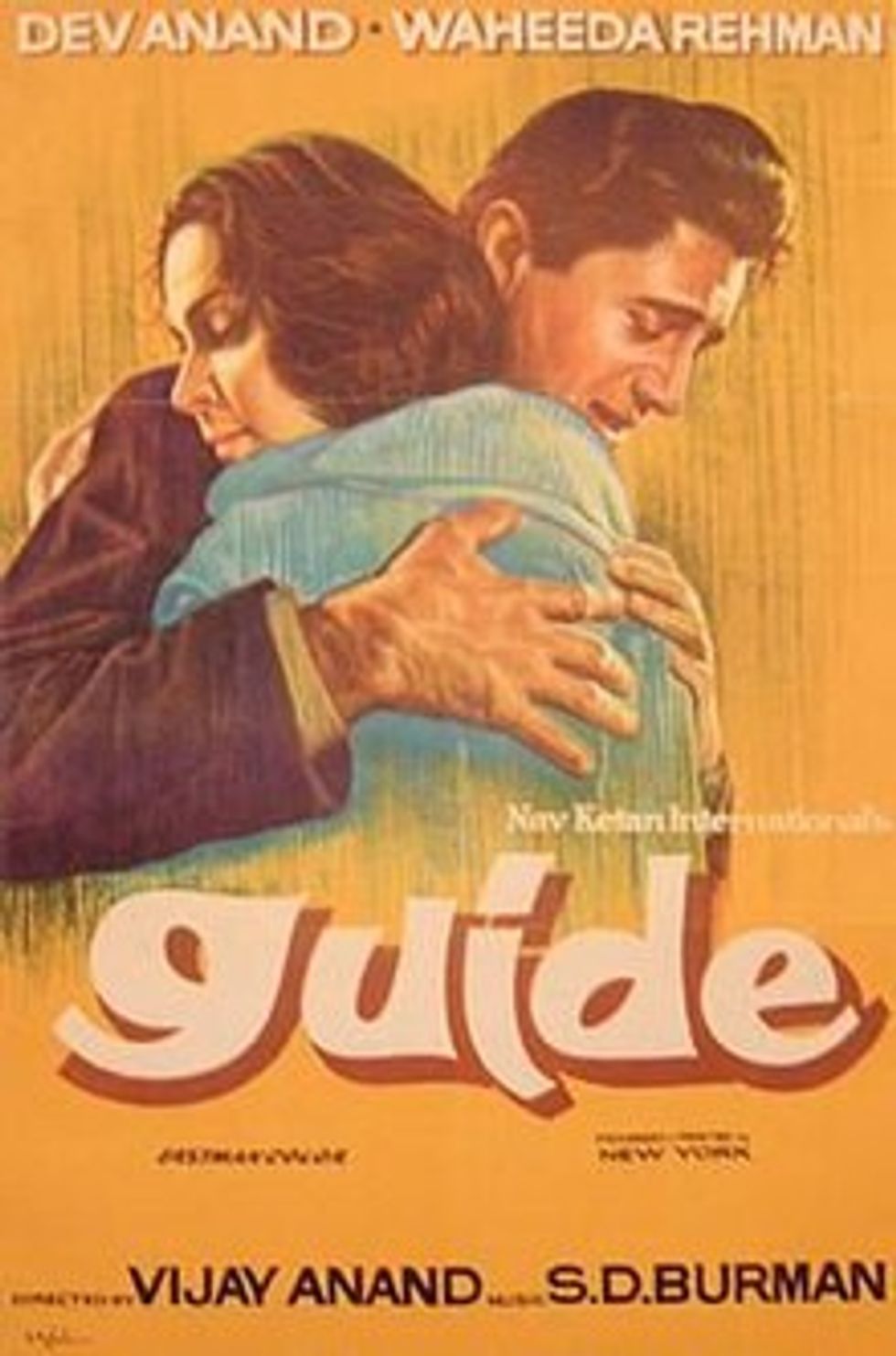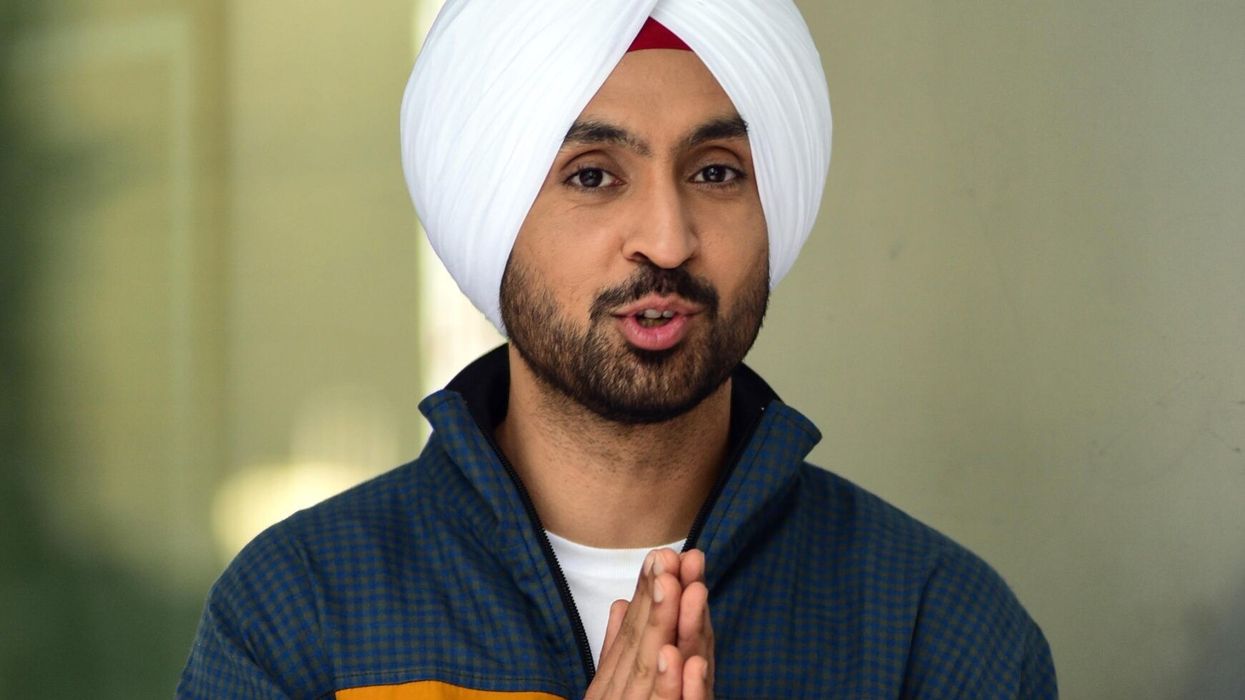FORTHCOMING film Singham Again has one of the biggest star casts ever assembled in modern Hindi cinema.
Ajay Devgn, Kareena Kapoor Khan, Deepika Padukone, Akshay Kumar, Ranveer Singh, Tiger Shroff, Arjun Kapoor and Jackie Shroff all headline the thriller, which is part of a cop universe franchise.
Forthcoming Bollywood comedy Welcome To The Jungle also boasts a massive number of lead stars.
This inspired Eastern Eye to go back through the decades and put together some of Bollywood’s greatest casting coups, listed in chronological order.
Anmol Ghadi (1946): Leading ladies Noorjehan and Suraiya were the two biggest singing stars of the 1940s. This was the only time they came together for a major movie. The casting became even more special a year later, as Noorjehan left for Pakistan during Partition and walked away from the Hindi film industry. This all-time classic became like a passing of the crown from one cinema queen to another.
AndazAndaz (1949): Bollywood’s greatest stars from the golden era of Hindi cinema were Raj Kapoor, Dilip Kumar and Nargis. Filmmaker Mehboob Khan brought them together for the one and only time when they were all fresh-faced newcomers. When it was released, Andaz – with its legendary love triangle – became the highest-grossing Bollywood film of all time, turning the leads into superstars overnight. They went on to become too big for any other producer to reunite them on screen.
Mughal-e-azamMughal-e-Azam (1960): Dilip Kumar and Madhubala had a very public break-up during the Naya Daur (1957) court case, where the superstar actor testified against the actress, leaving her devastated. Getting the two icons to star in a film together after that seemed impossible. However, big-thinking director K Asif managed to keep them in his ambitious epic, which became the only movie they starred in after their spectacular split. That chemistry helped Mughal-e-Azam become the greatest Bollywood movie of all time.
Waqt (1965): This path-breaking movie not only popularised the lost-and-found formula, but was also quite the multi-starrer. By bringing together Sunil Dutt, Raaj Kumar, Shashi Kapoor, Sadhana, Sharmila Tagore and Balraj Sahni, director Yash Chopra showed other producers that casting multiple stars did not mean their impact on the big screen was lost. It would inspire many subsequent films.
Raat Aur Din (1967): Nargis was the greatest and highest-paid leading lady from Bollywood’s golden era. The legendary actress rounded off her remarkable career with the Oscar-nominated movie Mother India (1957). She turned down record-breaking pay cheques and the biggest filmmakers after that, but was persuaded to do one last film by her producer brother, Jaffer Hussain. The incredible casting coup resulted in Nargis receiving a best actress nomination at the Filmfare Awards and she won India’s inaugural National Film Award for best actress.
Kal-Aaj-Aur-KalKal Aaj Aur Kal (1971): This family drama was particularly special because it brought together three different generations from the famous Kapoor family. Prithviraj Kapoor, Raj Kapoor, and Randhir Kapoor emulated their real-life relationship on screen by portraying a grandfather, father, and son, respectively. It would be the last film to star cinema legend Prithviraj, as he passed away a year later. Having big stars from three different generations of the Kapoor family was a one-time event.
NaginNagin (1976): Even today, it is difficult to get big-name heroes to star in a female-centric movie. Despite only having directed one forgettable film, producer-director Rajkumar Kohli managed to get leading men Jeetendra, Sunil Dutt, Feroz Khan, Sanjay Khan, Kabir Bedi, and Vinod Mehra to play smaller, supporting roles in a movie about an avenging ‘snake woman’ (played by Reena Roy). He also cast leading ladies Mumtaz, Rekha, and Yogeeta Bali in his ambitious supernatural thriller, which became the highest-grossing film that year.
Amar Akbar Anthony (1977): Manmohan Desai made his ambitious masala entertainer magical because all the cast members had magnificent momentum behind them. Amitabh Bachchan, Vinod Khanna, Rishi Kapoor, Parveen Babi, Neetu Singh and Shabana Azmi were all on an unstoppable rise when they came together for this all-time classic. It worked wonders, becoming the highest-grossing film of the year and remains in the top tier of most tickets ever sold.
Jaani Dushman (1979): The massive success of Nagin (1976) enabled producer-director Rajkumar Kohli to assemble another huge cast for this Hindi language horror film. He brought together Sunil Dutt, Sanjeev Kumar, Jeetendra, Shatrughan Sinha, Vinod Mehra, Reena Roy, Rekha, Neetu Singh and Bindiya Goswami for his monster-themed movie. The filmmaker once again struck gold with his formula of filling a film with popular lead stars.
The Burning Train (1980): Bollywood decided to emulate the star-studded Hollywood disaster movies of the 1970s with this action thriller. Director Ravi Chopra cast Dharmendra, Jeetendra, Vinod Khanna, Vinod Mehra, Hema Malini, Parveen Babi, Neetu Singh, Danny Denzongpa, Navin Nischol and Simi Garewal for his story of a high-speed train catching fire. The film’s concept and huge star cast meant it went over budget, so unsurprisingly, something similar wasn’t attempted again.
SilsilaSilsila (1981): There have been much bigger star casts, but never a greater casting coup in the history of Hindi cinema than bringing Amitabh Bachchan, Jaya Bachchan and Rekha onscreen for this love triangle with an extramarital affair. What made this truly astonishing was the onscreen story mirroring reality. Yash Chopra even got Jaya out of retirement to star in a movie with a woman who was allegedly having an affair with her husband in real life.
Naseeb (1981): The masala entertainer’s big stars – Amitabh Bachchan, Shatrughan Sinha, Rishi Kapoor, Hema Malini and Reena Roy – weren’t its biggest casting coup. Manmohan Desai brought together icons like Raj Kapoor, Shammi Kapoor, Rajesh Khanna, Waheeda Rehman and Sharmila Tagore to play cameo parts, portraying themselves in a song. Ironically, Bollywood’s biggest star, Bachchan, played a waiter in that. Another interesting aspect was casting all of Hindi cinema’s greatest villains – Amrish Puri, Amjad Khan, Pran, Prem Chopra, Shakti Kapoor and Kader Khan – in one film.
Shakti (1982): Bringing together Bollywood’s two greatest leading men onscreen was a seismic event in Hindi cinema. Director Ramesh Sippy was initially going to cast Raj Babbar, but when Amitabh Bachchan showed interest, there was no looking back, and he was given the role opposite his idol, Dilip Kumar. The powerful story of a father and son on opposite sides of the law gave audiences a chance to see two giants of cinema clash onscreen.
Kshatriya (1993): This multi-starrer had an interesting piece of casting that saw two Bollywood legends headline a movie with their respective famous sons. Dharmendra played Sunny Deol’s father, while Sanjay Dutt portrayed Sunil Dutt’s son. The action drama about feuding families also starred Vinod Khanna, Rakhee Gulzar, Meenakshi Seshadri, Divya Bharti and Raveena Tandon. Although the JP Dutta film received a largely positive response, it ran into trouble and was banned after Sanjay Dutt was accused in the 1993 Bombay bombings case.
Andaz Apna ApnaAndaz Apna Apna (1994): Aamir Khan, Shah Rukh Khan and Salman Khan are the three biggest Bollywood stars of the modern era, so bringing two of them together for the first time was a big deal. The Khans went on to become superstars; that’s why this movie has grown in stature and it became a cult classic. To put it into perspective, Aamir never did a full-fledged film with another Khan again.
MohabbateinMohabbatein (2000): When Shah Rukh became the new king of Hindi cinema, everyone was waiting for him to star alongside Bollywood’s greatest ever star, Amitabh Bachchan. Having broken box office records with his directorial debut, Dilwale Dulhania Le Jayenge (1995), Aditya Chopra was perfectly placed to bring the two titans together in this romantic musical. Their clash onscreen helped turn Mohabbatein into the year’s biggest hit.
Kabhi Khushi Kabhie GhamKabhi Khushi Kabhie Gham (2001): The multi-starrer was revitalised with this record-breaking movie from Karan Johar. He brought together Amitabh Bachchan and Jaya Bachchan after nearly 20 years. He also cast Hindi cinema’s hottest onscreen couple, Shah Rukh and Kajol, alongside the two most exciting newcomers at the time, Hrithik Roshan and Kareena Kapoor. Rani Mukerji also had a cameo in the ambitious movie, which became a global juggernaut, largely thanks to the incredible casting that came together perfectly.
Apne (2007): This movie may not have achieved blockbuster success, but it generated a lot of attention for being the first to bring together Bollywood legend Dharmendra with his famous sons, Sunny Deol and Bobby Deol. They later followed up this sporting drama with the comedy franchise Yamla Pagla Deewana, but Apne will remain special, because it was the first time the three of them starred together, adding emotional depth to the scenes.
Om Shanti Om (2007): The highest-grossing movie of that year broke the record for having the greatest number of stars in one song. Farah Khan brought together more than 30 recognisable names from the past and present for the smash hit Deewangi Dee Wangi song, which included one shot of Salman Khan, Saif Ali Khan, Sanjay Dutt and Shah Rukh Khan dancing together on a bar. The movie also included cameos from a host of other big names, making it the most star-studded film of all time.
Gulaab GangGulaab Gang (2014): During the 1990s, several big-name filmmakers, including Yash Chopra, tried to cast superstar leading ladies Madhuri Dixit and Juhi Chawla together, but failed. Writer-director Soumik Sen finally pulled off the seemingly impossible casting coup with this action-drama based on a real-life vigilante group. Unfortunately, he didn’t have the screenplay or commercial filmmaking skills to fully utilise his heavyweight heroines.











 The film’s poster
The film’s poster











 A timeless story of identity, love, and self-discovery – Moonlight shines beyond the screenInstagram/moonlightmov
A timeless story of identity, love, and self-discovery – Moonlight shines beyond the screenInstagram/moonlightmov

 The family tree from the novel’s opening
The family tree from the novel’s opening
 Hadiqa Kiani
Hadiqa Kiani Cover of her EP
Cover of her EP Kiani with Asjad Nazir
Kiani with Asjad Nazir